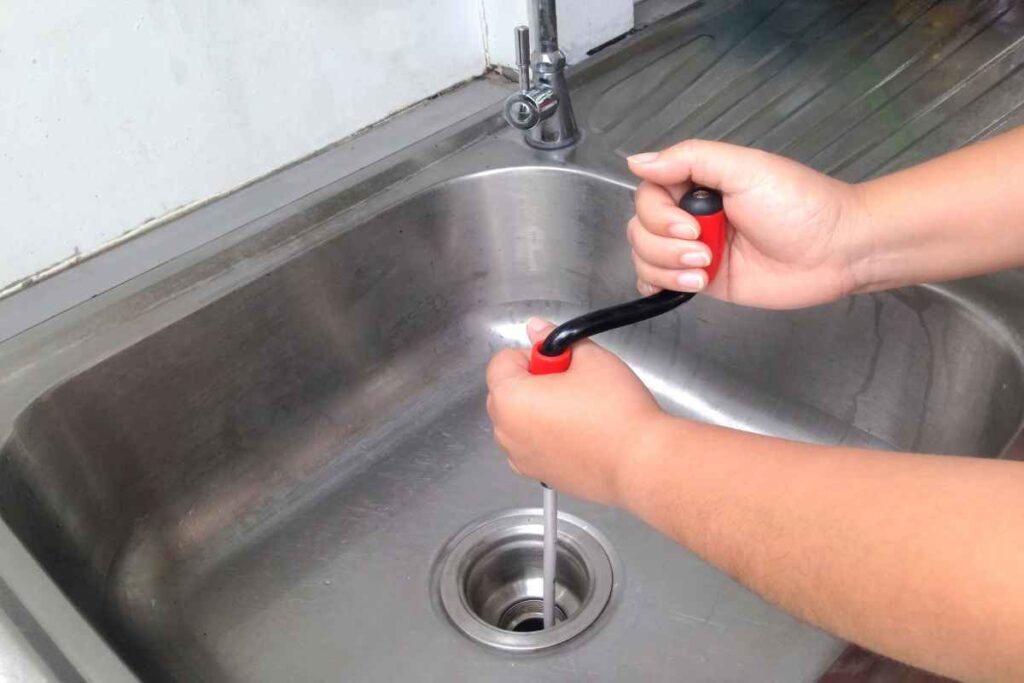The rising prominence of drain cleaning bladders in plumbing maintenance highlights their efficiency in tackling clogged drains. Despite being underestimated, their intricate workings raise questions about functionality. Understanding their operation sheds light on their potential to clear stubborn blockages efficiently. Specifically, the use of a large drain cleaning bladder can enhance the effectiveness of this process, making it easier to handle more significant clogs. Exploring their inner mechanisms reveals their role in maintaining clear plumbing systems.
What Is a Drain Cleaning Bladder?
A drain cleaning bladder is a specialized tool that clears pipe blockages using water pressure to expand and seal within the pipe. Its technology allows precise control over water pressure, ensuring efficient cleaning while minimizing pipe damage. Regular maintenance is crucial for its effectiveness, involving inspection for wear or damage and ensuring all components work properly. You can find drain cleaning bladders at Home Depot, and considering upgrades in bladder technology can enhance cleaning efficiency and performance. Staying informed about the latest developments in drain cleaning technology helps users make informed decisions about potential upgrades benefiting long-term maintenance processes.
Components of Drain Cleaning Bladder
The effectiveness of a drain cleaning bladder in eliminating pipe clogs hinges on its intricate components, facilitating precise water pressure application for optimal performance. Typically crafted from durable, flexible materials like reinforced rubber or PVC, the bladder design enables expansion when pressurized, conforming to the pipe’s shape and forming a seal to direct pressure toward blockages. Central to this process is pressure control, often facilitated by a pressure control valve allowing users to adjust water pressure as needed. This feature is crucial for preventing damage to delicate pipes while effectively clearing blockages. Together, the bladder design and pressure control mechanisms synergize to deliver efficient and targeted cleaning of drains and pipes, making them indispensable tools for plumbing maintenance.
Operating Mechanism of Drain Bladder
The drain bladder’s operating mechanism relies on controlled expansion and pressurization to clear pipe blockages. Its flexible material allows deflated insertion into pipes. When inflated with water or air at regulated pressure, it expands, exerting force against pipe walls, creating a seal isolating the blockage. Increasing pressure dislodges or breaks apart the blockage, restoring water flow. This simple yet effective design can tackle various obstructions in plumbing systems, residential or commercial.
Benefits of Using Drain Cleaning Bladder
Incorporating drain cleaning techniques with drain cleaning bladders in plumbing maintenance offers several practical benefits. These bladders efficiently use pressure to remove stubborn blockages, providing cost-effective solutions compared to traditional methods that demand extensive labor or expensive equipment. They’re environmentally friendly, often eliminating the need for harsh chemicals. Drain cleaning bladders deliver quick results by swiftly clearing blockages, minimizing disruptions to daily activities and restoring proper flow in pipes promptly. Overall, these drain cleaning techniques offer a practical, cost-effective, environmentally friendly, and efficient solution for addressing stubborn blockages in plumbing systems.
Tips for Effective Drain Bladder Usage
How to use a drain cleaning bladders, it is essential to follow specific guidelines to ensure effective unclogging of pipes. To maximize the efficiency of drain bladder usage and prevent potential mishaps, consider the following tips:
Proper Technique: Before inserting the drain bladder, ensure it is the right size for your pipes. Apply steady pressure while inflating the bladder to create a tight seal within the pipe for effective blockage removal.
Check Pipe Condition: Inspect the pipes for any visible damage or weak points before using the drain bladder to avoid causing further harm to the plumbing system.
Mind the Pressure: Do not overinflate the drain bladder as it may lead to bursting or damaging the pipes. Follow the manufacturer’s guidelines for the recommended pressure levels.
Clear Surrounding Area: Remove any obstructions near the drain opening to allow smooth access for the drain bladder insertion and ensure unrestricted water flow.
Frequently Asked Questions
Are Drain Cleaning Bladders Safe to Use on All Types of Pipes, Including Older or More Delicate Materials?
When considering drain cleaning bladders, pipe compatibility is crucial to ensure safe usage. Older or delicate pipes may be more sensitive to the pressure exerted by bladders, requiring careful maintenance and monitoring for optimal results.
Can Drain Cleaning Bladders Be Used on Outdoor Drains or Sewer Lines?
When considering outdoor applications, drain cleaning bladders can be effective tools for clearing blockages. However, it is crucial to ensure compatibility with sewer lines to guarantee safety. Proper usage and understanding of the equipment are essential.
How Often Should Drain Cleaning Bladders Be Used to Maintain Optimal Drain Health?
Regular drain cleaning with a bladder is recommended every 6-12 months to optimize drain health. Benefits include preventing clogs, improving water flow, and extending the lifespan of your plumbing system. Conducting preventative maintenance will ensure efficient drainage.
Can Drain Cleaning Bladders Effectively Remove Tree Roots or Other Stubborn Blockages?
Drain cleaning bladders are effective in removing tree roots and stubborn blockages. However, their effectiveness may be limited by the severity of the obstruction and the size of the pipe. Regular maintenance is crucial for optimal results.
Are There Any Potential Drawbacks or Limitations to Using Drain Cleaning Bladders for Clearing Clogs?
While drain cleaning bladders can be effective at clearing clogs, they may have limitations when dealing with large or solid blockages like tree roots. Additionally, improper use can damage pipes, making professional assessment advisable.
Conclusion
In conclusion, drain cleaning bladders are effective tools for clearing clogged drains by using water pressure to dislodge blockages. By expanding inside the drain pipe, the bladder pushes debris out of the way, allowing for improved flow. With proper usage and maintenance, drain cleaning bladders can help prevent costly plumbing issues and keep drains clear and functioning properly.

